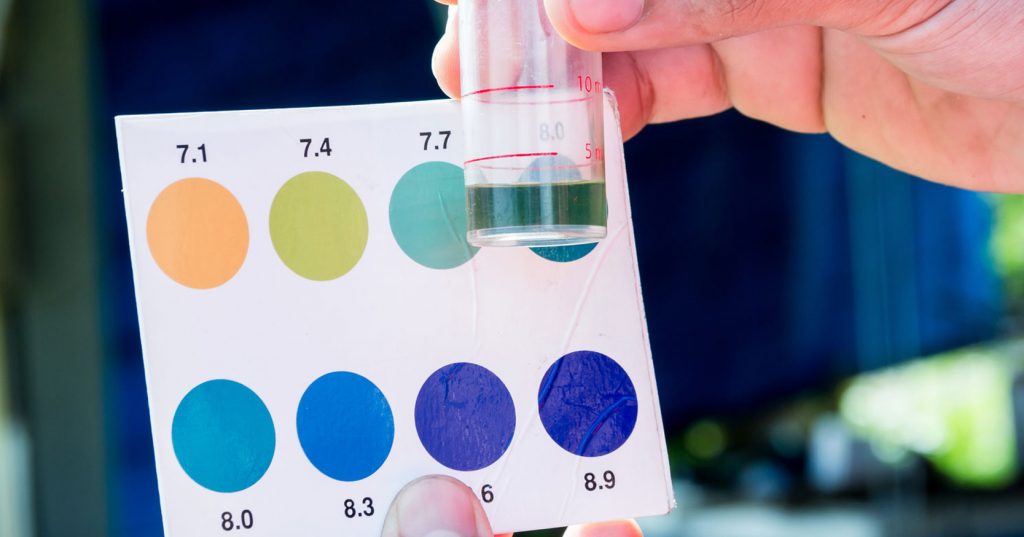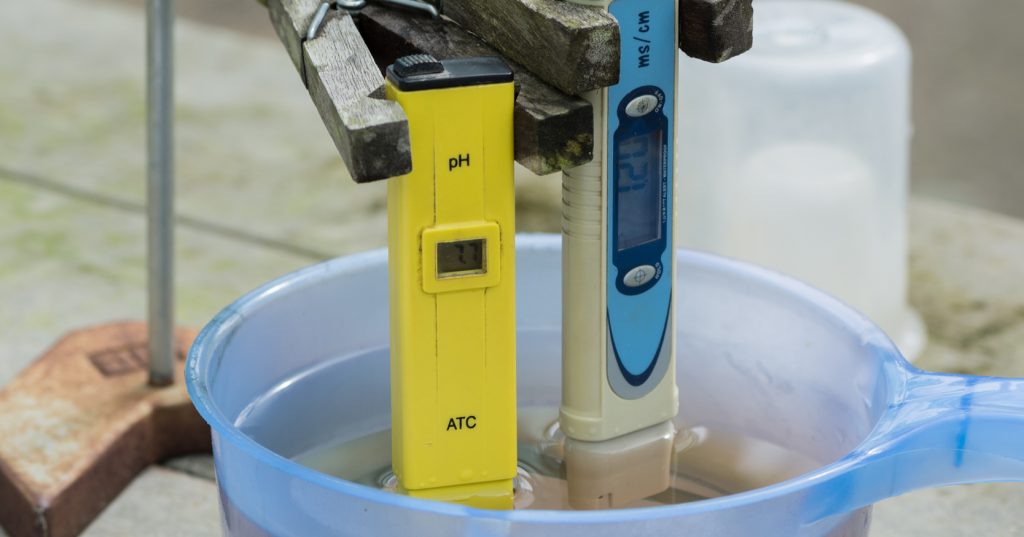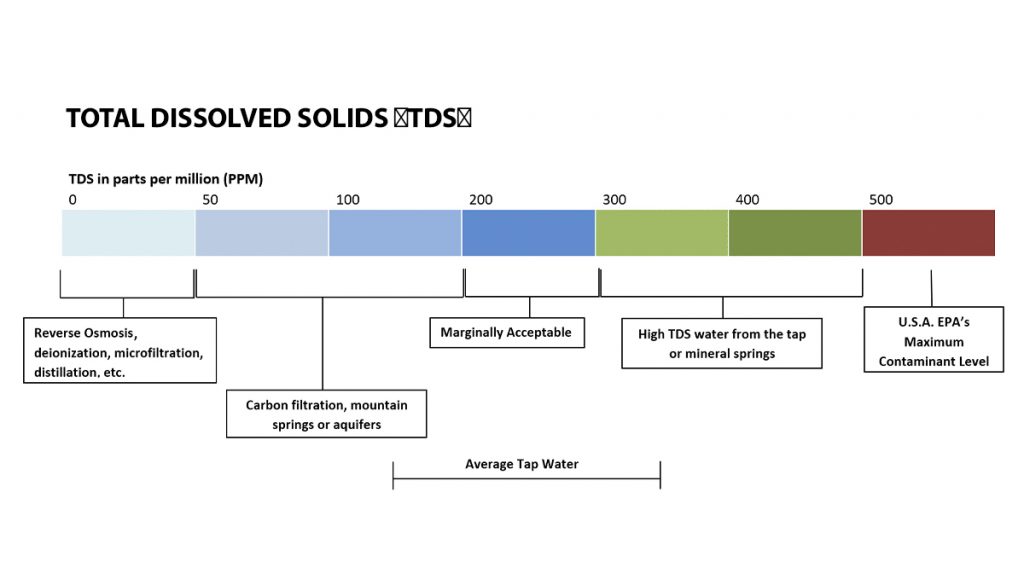Best pH Levels For Hydroponic Cannabis Systems
UncategorizedWhen talking about growing cannabis, pH levels are extremely important. It doesn’t matter if you’re growing in soil or soilless, pH levels make a huge difference in plant health and yields so read along on everything you need to know about pH levels and the best pH for hydroponic cannabis!
1. What Does pH Mean?
PH is a way of measuring the acidity or alkalinity of a liquid. The pH scale ranges from 1 to 14, where 7 is neutral, 1 to 6.9 is acidic, and 7.1 to 14 is alkaline. (Technically, acidic substances produce hydrogen ions and alkaline substances produce hydroxide ions.) It’s important to mention that in the pH scale, even a decimal point can make a huge difference. But how does pH relate to plants?
2. Hydroponic Marijuana pH
The pH of both the browning medium and the nutrient solution has a huge effect on a plant’s ability to absorb the nutrients in the medium. Cannabis plants grow in slightly acidic mediums but there isn’t just one specific number, so there isn’t an ideal ph rather than an ideal pH range because different nutrients are available at slightly different pH levels. So by having the pH oscillating within a specific range, you allow your plants to absorb more nutrients. Let’s take a look at the table below:
| pH Levels | 5.1 | 5.2 | 5.3 | 5.4 | 5.5 – 6.1 | 6.2 | 6.3 | 6.4 | 6.5 |
| Nitrogen | ⚪ | ⚪ | ⚪ | ⚪ | 🟡 | 🟢 | 🟢 | 🟢 | 🟢 |
| Phosphorus | 🟢 | 🟢 | 🟢 | 🟢 | 🟡 | 🔴 | 🔴 | 🔴 | 🔴 |
| Potassium | 🟢 | 🟢 | 🟢 | 🟢 | 🟡 | 🔴 | 🔴 | 🔴 | 🔴 |
| Magnesium | 🔴 | 🔴 | 🔴 | 🔴 | 🟡 | 🟢 | 🟢 | 🟢 | 🟢 |
| Calcium | 🔴 | 🔴 | 🔴 | 🟢 | 🟡 | ⚪ | ⚪ | ⚪ | ⚪ |
| Zinc | 🟢 | 🟢 | 🟢 | 🟢 | 🟡 | 🔴 | 🔴 | 🔴 | 🔴 |
| Iron | 🟢 | 🟢 | 🟢 | 🟢 | 🟡 | ⚪ | ⚪ | ⚪ | ⚪ |
| Sulfur | 🔴 | 🔴 | 🔴 | 🔴 | 🟡 | 🟢 | 🟢 | 🟢 | 🟢 |
🔴 = Nutrient Lockout
🟢 = Nutrients Available
🟡 = Optimal PH
⚪ = Not Available
As you can see in the table, the ideal pH level for hydroponic cannabis ranges between 5.5 – 6.1 but if you’re growing in coco ( which is considered a hydroponic substrate) with mixed-in organic matter such as worm castings, you should treat it like soil and adjust the pH a bit higher, ranging from 6.1 – 6.6.
If you fail to keep the pH within the mentioned ranges, some macro and micronutrients may not be available for your plant to absorb and your plant will most likely show deficiency symptoms even if the nutrients are present in the medium.
This means that if you don’t adjust the pH and continue feeding a nutrient solution, the nutrients can cause a salt build-up in the medium which can cause lockout and end up killing your plants.
3. Hydroponic Systems and Nutrient Solutions
If growing hydroponically, pH is much more important than in soil because there’s no soil to buffer the nutrient solution, so pH values act much more quickly. In hydro, the nutrient solution in the reservoir will naturally oscillate which is good because will allow plants to absorb every nutrient it needs without you having to do it manually. So when mixing the solution, always mix each product separately and always check and adjust the pH right after mixing in the fertilizers and again one hour later just to make sure everything is correct.
3.1. Checking pH Levels in Hydro
Most soil growers don’t actually need a pH pen but when growing hydroponically it’s vital to have one. There are a couple of ways of checking pH levels, you can use a digital pH pen which is the easiest and most accurate way to check pH levels but can be a bit expensive for most growers.

So if you don’t want to spend $100-$150 dollars, you can go for pH strips which are much cheaper but are not as precise because you have to compare the color of the strip with the colors on the index provided instead of just getting a specific number like a pH pen.
But it really doesn’t matter what you use, make sure to check pH levels daily to avoid lockout and have really healthy plants.
3.2. Adjusting pH for Hydroponic Cannabis
But what if you check the pH level and it’s way off? Well, the only way to do so is to use pH Up and pH Down solutions. You may find growers that use vinegar, baking powder, or lemon juice to adjust pH but it’s not recommended because the pH will fluctuate aggressively just a couple of hours after adjusting it so it’s highly recommended you use the solutions mentioned, which are specifically designed for this.
So once you have your pH Up or pH Down available, it’s just a matter of checking the pH with the pH pen or pH strips and then just following the instructions until you reach the desired pH. Here are a couple of tips:
- Remember that pH levels are much more important in hydro systems so if you’re a beginner, it’s better to grow in soil. Don’t worry, you’ll also get excellent results.
- It’s much, much easier to adjust pH levels with pH Up and pH Down formulas, so do it the right way!
- It’s recommended to check pH levels 2 -3 times a day.
4. Are There Different pH Levels for the Different Plant Growth Stages?
As mentioned, for a plant to reach its maximum potential, the pH level shouldn’t be the same throughout the whole grow cycle. This happens because cannabis plants have slightly different nutrient requirements depending on the growth stages they’re in (germination, seedling, vegetative, pre-flower, flowering).

If you don’t want to deal with checking and adjusting pH, you can grow really beautiful plants by keeping the ph between the 5.5 – 7.0 range from seed to harvest but if you really want to take your crop to the next level, the ideal pH levels for each cannabis plant stage are:
- Germination / vegetative stage: 5.8 – 5.9
- Pre-flowering stage: 6.0 – 6.2
- Flowering stage: 6.0 – 6.3
But pH is not the only thing you should check and adjust. In hydro, the nutrient concentration is extremely important because the roots are growing directly in it, so it shouldn’t be too strong or too weak. This is where Electrical Conductivity (EC) and Total Dissolved Solids (TDS) come in.
5. Understanding TDS and EC
You must have heard the terms EC and TDS being used by growers, especially hydro growers. TDS and EC are extremely important, just like the pH level so let’s learn a bit more about electrical conductivity and total dissolved solids.
Electrical Conductivity (EC)
Electrical conductivity measures how well water (or a nutrient solution) conducts electricity. This means that the higher the nutrient concentration, the higher the electrical conductivity. So growers can check EC levels to ensure there’s enough food in the nutrient solution but the problem is that EC does not provide exactly what elements are present in the nutrient solution.
Because of this, growers need to start with reverse osmosis water or water with an EC as close to 0 as possible so that when you add the nitrogen, phosphorus, potassium and etc…you’ll know exactly what’s in your nutrient solution.
Ideal EC for Cannabis per Growth Stage
- Early vegetative stage: 1.0 – 1.5
- Late vegetative stage: 1.5 – 2.0
- Mid-flowering: 2.0 -2.5
- Harvest: as close as 0 as possible.
It’s important to follow these values because low EC levels will result in nutrient deficiencies and high EC levels can cause nutrient toxicity and leaf burn.
Total Dissolved Solids (TDS)
Unlike EC, Total Dissolved Solids (TDS) measures all inorganic and organic matter in the nutrient solution. TDS is measured in parts per million (PPM), to give you an idea, tap water has a TDS of 200-400 ppm and distilled water usually has a TDS as low as 0. While it may sound that the lower the PPM, the better, it’s not because there are a lot of organic and inorganic elements found in water that are crucial for plants.

This means that when growing hydroponically, you should take TDS into consideration; You can use the following values as a guideline:
Ideal PPM for Cannabis per Growth Stage
Seedlings: 100 – 400
Seedlings don’t actually need nutrients but as long as you stay between this range there shouldn’t be a problem.
Early vegetative stage: 500 – 800
Make sure to provide more Nitrogen during the vegetative stage.
Late vegetative stage: 800 – 1200
Remember to slowly start increasing the amounts of Phosphorus and Potassium as your plant is reaching pre-flower.
Early Flowering: 1000 – 1400
This is probably when your cannabis plant will make that final stretch so make sure to reduce Nitrogen amounts after the flower stretch.
Mid-flowering Stage: 1200 – 1600
This is when cannabis needs more food so keep Nitrogen levels at a minimum and increase Phosphorus and Potassium.
Late Flower / Harvest: 1000 – 500 – 0
Once your plant is almost ready for harvest, it’s time to reduce the PPM so gradually start decreasing it until you reach zero PPM right before harvest, this is called flushing and removes all the nutrients stored in the cannabis plant, resulting in much better tasting flowers while decreasing harshness.
Now that you know how to take care of your plants, get your hydro system and get growing!